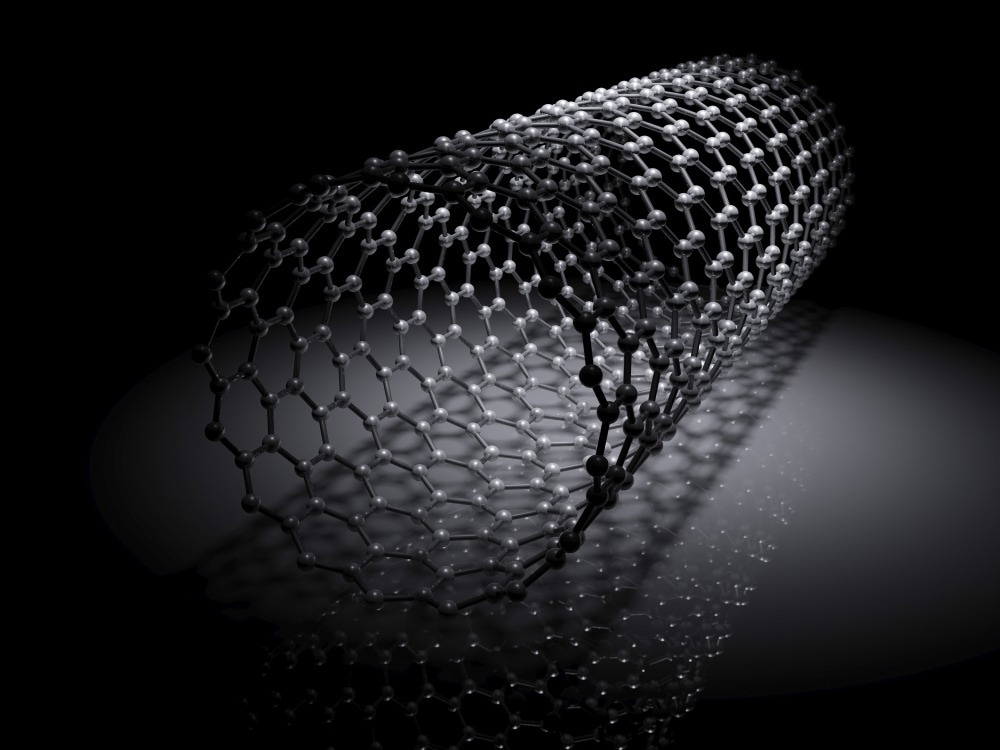The preparation of carbon nanotubes via flame synthesis involves a combustion system modified with a carbon source, heat source, and appropriate catalytic material. To this end, building carbon nanotubes on a copper (Cu) substrate via flame synthesis is a novel approach to achieving Cu-based carbon nanotube composites.

Study: Synthesizing copper-carbon nanotube composites through methane diffusion flame. Image Credit: Evannovostro/Shutterstock.com
In an article recently published in the journal Materials Today: Proceedings, researchers fabricated Cu-based carbon nanotube composites via flame synthesis to improve the electrical and thermal properties of the Cu material. Cleaning and etching Cu substrates with concentrated sulfuric acid were the initial step toward Cu-based carbon nanotubes.
The cleaned and etched Cu substrates were subjected to two different laminar flames using methane. The standard diffusion flame (NDF) configuration showed a blue flame, shielding the carbon-rich yellow flame without a clear distinction between the flames. On the other hand, the inverse diffusion flame (IDF) configuration showed a clear separation between the blue and yellow flame, creating two distinct temperature zones.
This flame synthesis realized favorable conditions for synthesizing the carbon nanotubes on Cu substrate. The fabricated Cu-based carbon nanotubes had tubular diameters of 20 to 30 nanometers. Thus, with the help of the present study, the researchers realized that a novel flame synthesis is a cost-effective approach to the construction of Cu-based carbon nanotube composites.
Synthetic Strategies Towards Carbon Nanotubes
Carbon nanotubes are flat graphene sheets folded into a tube. Their incorporation into transition metals results in an advanced composite material that leverages the favorable properties of carbon nanotubes like current carrying capacity, electrical conductivity, mechanical strength, and thermal conductivity.
Previous reports mentioned electrodepositing or powder-processing approaches as primary synthetic strategies for metal-based carbon nanotubes. Studies have shown that the electrodeposition method is more advantageous than the powder processing method due to reduced chances for agglomeration and high carbon nanotube loading factor. However, due to incubation for an extended period and a high-temperature vacuum environment, the electrodeposition method becomes an expensive approach.
In flame synthesis, the carbon and heat sources are obtained from pyrolysis and combustion. Hydrocarbon is used as a cost-effective energy source to synthesize carbon nanotubes on metal substrates. Moreover, previous reports majorly mentioned nickel and other transitional metals as metal substrates, while copper as a metal substrate for synthesizing carbon nanotubes remains relatively unexplored.
Among flame structures previously reported in flame synthesis, NDF and IDF are safe configurations for their operations since they are devoid of the critical risks of explosion due to flame backflows.
Copper-Carbon Nanotube Composites Through Methane Diffusion Flame
The present study used nickel and Cu grids of 3 millimeters with 400 x 62-micrometer pitch as metal substrates. These grids were initially cleaned with acetone, followed by etching with sulfuric acid. The methane-based NDF flame was divided into molecular, growth, and oxidation zones.
The molecular zone facilitated the decomposition of methane into precursors of carbon nanotubes. In the growth zone, carbon nanotube precursors like carbon monoxide (CO) and pyrolyzed carbon molecules were deposited on the catalyst's surface and used to form carbon nanotubes.
The growth zone is concentrated primarily in the yellow flame region containing a significant concentration of carbon nanotube precursors. Furthermore, these precursors were delivered into the oxidizing zone of the yellow flame that encapsulates the blue flame. However, placing the Cu substrate in the oxidizing zone will hamper the structure of carbon nanotubes by decomposing them into carbon dioxide and water. Thus, the growth zone of NDF flame is critical for carbon deposition and growth of carbon nanotubes.
Scanning electron microscopy (SEM) images of carbon nanotubes on nickel substrate revealed tubular structures of 20 to 60 nanometers on nickel grid surface after NDF incubation for 5 minutes. Contrastingly, SEM images of the Cu grid incubated under the same conditions did not show the formation of Cu-based carbon nanotubes despite their treatment with concentrated sulfuric acid.
The IDF consisted of orange-yellow flame, shielding the conical-shaped blue flame, wherein clear stratification was observed between the oxidation and growth zones. The excess presence of fuel mainly contributes to the yellow flame and methane pyrolysis, supported by blue flame. The yellow flame of IDF had a similar purpose to in NDF, as the carbon nanotubes’ growth zone, while the blue flame consists of an oxidation zone. The SEM images revealed that, unlike in NDF, the incubation in IDF resulted in carbon nanostructures of diameter 20 to 30 nanometers on the Cu substrate.
Conclusion
Overall, improved control over temperature, flame shape, and appropriate carbon nanotube precursors concentration was achieved through diffusion flame arrangement. Consequently, the growth of carbon nanotubes was controlled in IDF and NDF configurations. The IDF configuration with distinct separation of flame zones allowed Cu incubation at higher temperatures.
These elevated temperatures provided an enhanced amount of carbon nanotubes precursors without hampering the Cu substrate. Thus, the IDF configuration was advantageous over its NDF due to the generation of a distinct separation between the oxidation and growth zones, suggesting IDF to be a suitable medium to fabricate Cu-based carbon nanotubes via flame synthesis.
Reference
How, HC., Chow, YL., Wong, HY., Ho, JH., Law, CH. (2022). Synthesizing copper-carbon nanotube composites through methane diffusion flame. Materials Today: Proceedings. https://doi.org/10.1016/j.matpr.2022.06.489
Disclaimer: The views expressed here are those of the author expressed in their private capacity and do not necessarily represent the views of AZoM.com Limited T/A AZoNetwork the owner and operator of this website. This disclaimer forms part of the Terms and conditions of use of this website.